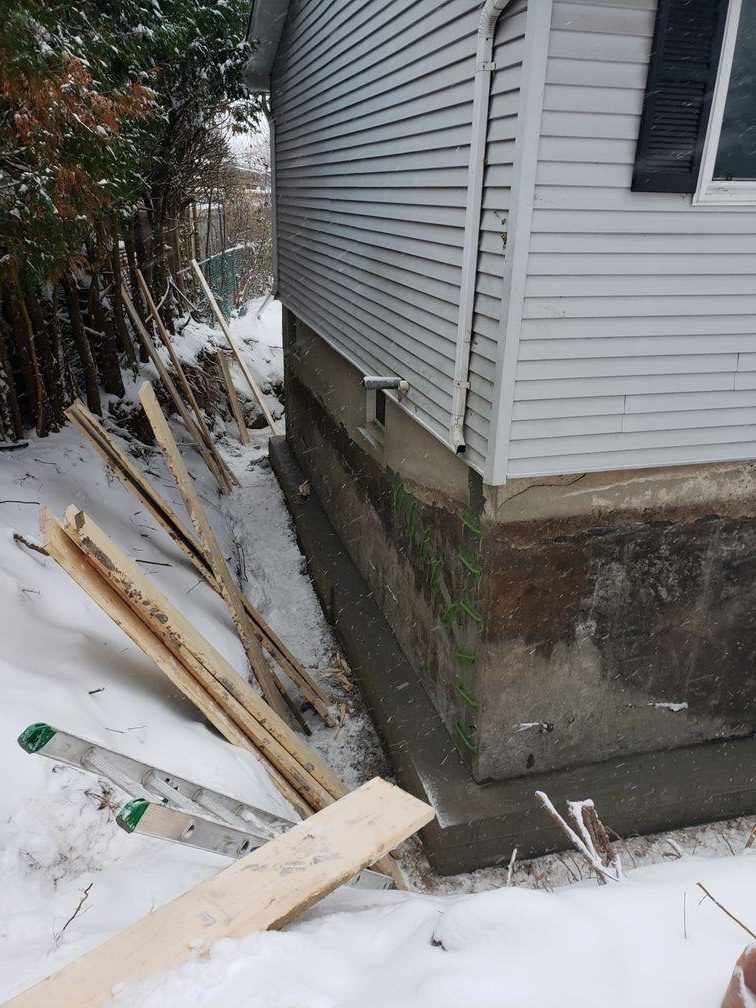Concrete Repair: Our Weather’s Role in Structural Longevity
Understanding the profound impact of weather, particularly cold conditions, is crucial for anyone in new construction or concrete repair. We will look at how cold weather influences concrete damage and outline strategies for safeguarding any concrete structures.
Understanding the Impact of Cold Weather on Concrete
Cold weather concreting presents many challenges that can significantly affect the material’s performance and longevity. The hydration process, essential for concrete to attain its strength, is adversely slowed in cold conditions. This delay in setting and curing not only prolongs construction schedules but also jeopardizes the structural integrity of the concrete. Moreover, concrete exposed to freeze-thaw cycles without adequate protection is susceptible to scaling, cracking, and other forms of distress. These cycles occur when water trapped within the concrete’s porous structure, freezes. It then expands when it thaws, a phenomenon that can cause extensive concrete damage over time.
Practical Insights from Industry Practitioners
Insights from construction professionals, gleaned through surveys and practical experiences, emphasize the tangible impact of weather on concrete work. Productivity losses, attributed to delays and additional protective measures necessitated by adverse weather, underscore the need for meticulous planning and execution of concrete projects. Recognizing the influence of weather conditions on concrete setting, curing, and overall quality is paramount for site managers and construction teams aiming for successful project outcomes.
Strategies for Protecting Concrete in Cold Weather
Several concrete protection methods have been identified as effective in mitigating the adverse effects of cold weather. Among these, maintaining appropriate concrete temperatures to prevent early-age freezing is paramount. Accelerating admixtures, decreasing the water-cementitious material ratio, and selecting the right type of cement can all contribute to accelerated setting times and enhanced freeze-thaw resistance. These strategies not only protect the concrete during critical early stages but also ensure that it develops the necessary strength to withstand the rigors of its environment.

Mitigating Freeze-Thaw Damage in Concrete Repair
Understanding and implementing measures to enhance freeze-thaw resistance is critical for extending the life of concrete structures in cold climates. Employing air-entraining admixtures, opting for low-permeability concrete mixes, and ensuring adequate concrete cover over reinforcing steel are effective methods to mitigate freeze-thaw damage. These approaches help maintain concrete’s structural integrity and aesthetic appeal, even under the challenging conditions posed by cold weather.
Weathering the Storm
The interplay between weather conditions and concrete integrity, particularly under the duress of cold weather, plays a pivotal role that cannot be ignored. Keeping abreast of the latest developments and strategies in weather-related concrete protection is indispensable for those at the helm of construction projects, engineers, and maintenance crews. This includes engaging with industry subject matter experts, seeking continuing education opportunities, and harnessing innovative materials and technologies. These proactive measures are instrumental in curtailing the adverse effects of weather on concrete, with a special emphasis on foundation repair and concrete repair, which are crucial for maintaining the structural integrity of buildings.
